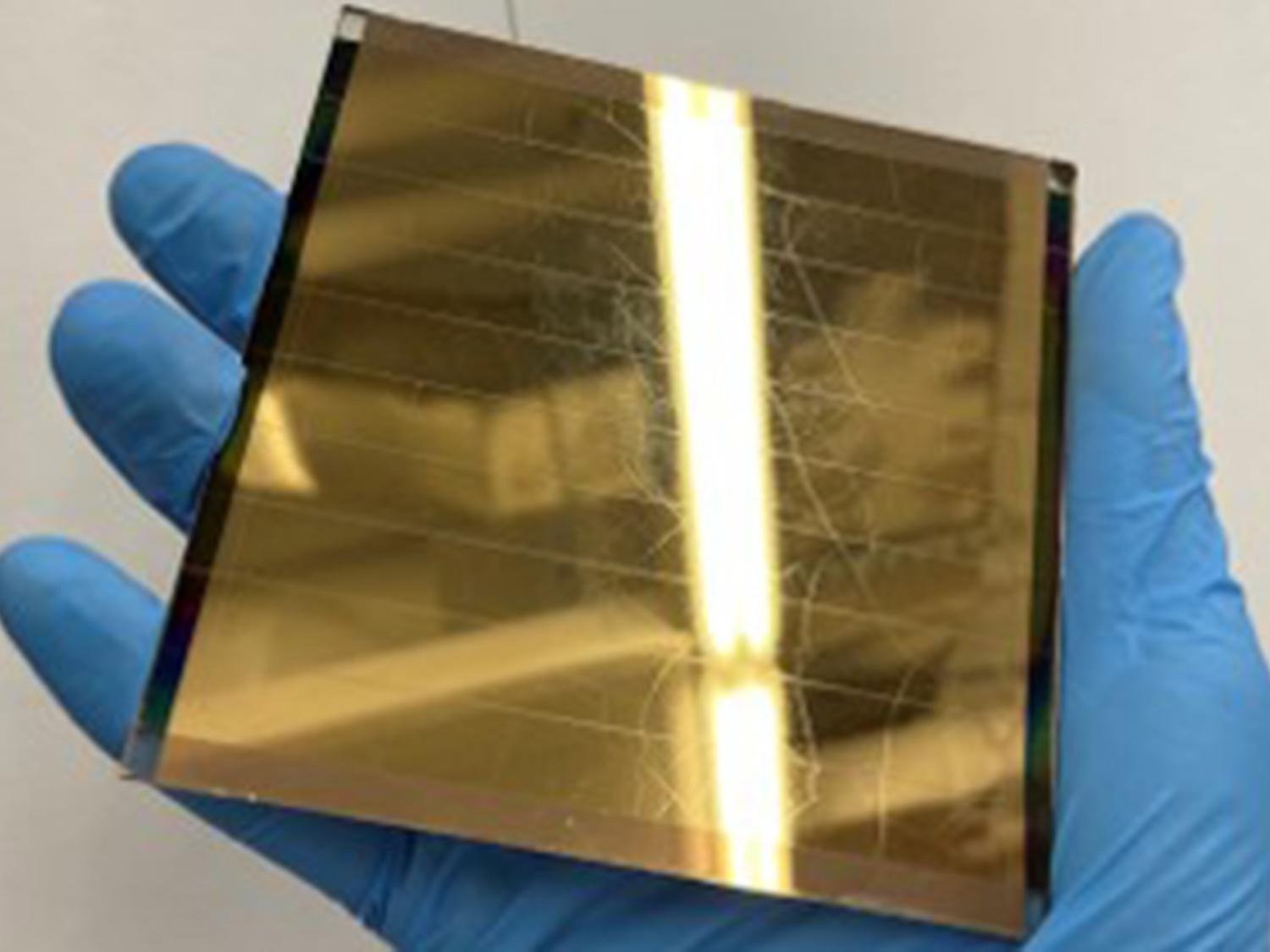Scientists are attempting to improve solar device performance as the global demand for solar energy increases. This is essential if solar technology is to contend with conventional energy sources. However, there are theoretical restrictions on how effectively solar cells can be produced.
 A researcher holds a perovskite module. Image Credit: Penn State
A researcher holds a perovskite module. Image Credit: Penn State
Adding up-conversion nanoparticles to the components of the solar cells is one way to increase efficiency beyond those constraints. Solar cells are now able to absorb energy from a broader range of light than they would ordinarily be able to do, thanks to the up-conversion materials.
The nanoparticles increased efficiency, but not in the way that the research team had anticipated. Their discovery could point to a new direction for developing solar gadgets that are more effective.
Some researchers in the literature have hypothesized and showed results that up-conversion nanoparticles provide a boost in performance. But this research shows that it doesn’t matter if you put in up-conversion nanoparticles or any other nanoparticles—they will show the boosted efficiency because of the enhance light scattering.
Shashank Priya, Professor, Materials Science and Engineering, Penn State
The scientists compared adding nanoparticles to placing millions of tiny mirrors inside a solar cell. A considerable photocurrent augmentation results from light passing through the device, striking the nanoparticles and scattering, possibly hitting other nanoparticles, reflecting several times inside the device, and hitting additional nanoparticles.
The scientists claimed that the increased efficiency of the solar cells they built was caused by this light scattering mechanism rather than the up-conversion.
It doesn’t matter what nanoparticles you put in, as long as they are nanosized with specific scattering properties it always leads to an increase in efficiency by a few percentage points. I think our research provides a nice explanation on why this type of composite light absorbing structure is interesting for the solar community.
Kai Wang, Study Co-Author and Assistant Research Professor, Department of Materials Science and Engineering, Penn State
Up-conversion nanoparticles function by absorbing infrared light and releasing visible light that solar cells can pick up and use to generate more electricity. Even though infrared radiation from the sun travels over half of the distance to Earth, most solar cells are unable to capture it.
The Shockley-Queisser (SQ) limit, which is approximately 30% for single-junction solar cells fueled by sunlight, is a theoretical upper limit on the efficiency of solar cells. Scientists have claimed that utilizing this might increase solar cell efficiency over this limit.
Utilizing up-conversion nanoparticles has been proven to increase efficiency by 1–2%. However, the team discovered that the perovskite solar cells they produced received only a slight boost from these materials.
We were focused initially on up-converting infrared light to the visible spectrum for absorption and energy conversion by perovskite, but the data from our Penn State colleagues indicated this was not a significant process. Subsequently we provided undoped nanocrystals that do not give optical up-conversion and they were just as effective in enhancing the energy conversion efficiency.
Jim Piper, Study Co-Author and Emeritus Professor, Macquarie University
The increase in efficiency, according to the team’s theoretical estimates, was caused by the nanoparticles’ enhanced capacity for light scattering.
We started to basically play around with nanoparticle distribution in the model, and we started to see that as you distribute the particles far away from each other, you start to see some enhanced scattering. Then we had this breakthrough.
Thomas Brown, Associate Professor, University of Rome
According to research published in the journal ACS Energy Letters, adding nanoparticles increased the efficiency of perovskite solar cells by 1%. Higher efficiency, according to the researchers, might be achieved by modifying the distribution, size, and form of the nanoparticles used in these devices.
Priya added, “So some optimum shape, distribution or size can actually lead to even more photocurrent enchantment. That could be the future research direction based on ideas from this research.”
Venkatraman Gopalan, Professor of Materials Science and Engineering and Physics at Penn State, Assistant Research Professors Alexej Pogrebnyakov, Dong Yang, postdoctoral fellows Jungjin Yoon and Luyao Zheng, doctoral candidate Yuchen Hou, and graduate student Haodong Wu were other researchers.
Yiqing Lu, a senior lecturer at Macquarie University in Australia, together with honorary research fellows Xianlin Zheng and Jun Zhang, contributed to this work as well.
The scientists said that the Air Force Office of Scientific Research BioPhysics program provided numerous chances for collaboration that made this research possible. At a program’s annual review meeting, the team got together and initially talked about the possibilities for joint research.
The AFOSR Research BioPhysics program provided funding for this study. Some of the co-authors received support through the U.S. Department of Energy and the National Science Foundation programs.